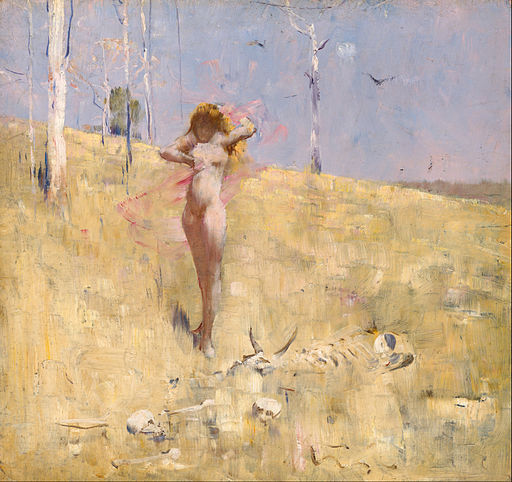Drought as a Femme Fatale or mischievous nymph:


Story:
At the time of the short sharp Centennial drought (1888) and the beginning of the Federation drought (1895), two of Australia’s leading painters who had made their name interpreting the local landscape through the benign language of Impressionism drew instead on the far darker Symbolism in their evocations of drought. Charles Conder personifies drought as a red-haired femme fatale, languidly sprawled belly down on desert sands, blowing the fumes of a fire towards unsuspecting towns. The artist conflates the fear and anxiety caused by what was at the time considered the worst drought on record with the patriarchal fear of feminine sexuality through the familiar trope of the female monster as a harbinger of doom and victimizer of men. Streeton, who is said to have greatly admired Conder’s painting, reaches for a related trope. The spirit of drought here is a pubescent nymph prancing over the bleached bones of livestock: woman as ingenue, as self-absorbed and frivolous, taking capricious pleasure in wreaking havoc while the national interest, the farmer’s enterprise, is gendered male.